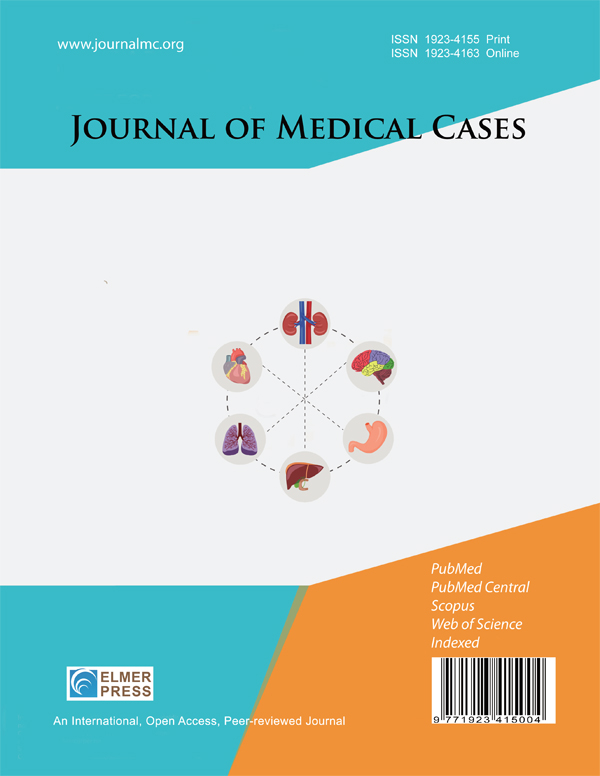A Case of High-Risk Myelodysplastic Syndrome With Cryoglobulinemia, Hemophagocytic Lymphohistiocytosis, and Progression to Multiple Organ Failure
DOI:
https://doi.org/10.14740/jmc5134Keywords:
Myelodysplastic syndrome, Hemophagocytic lymphohistiocytosis, Cryoglobulinemia, Multiple organ failureAbstract
Myelodysplastic syndromes (MDSs) are a group of hematological malignancies characterized by ineffective hematopoiesis. It is associated with genetic mutations, including p53 pathway genes, and can lead to complications, such as cytopenia and transformation to acute myeloid leukemia (AML). Hemophagocytic lymphohistiocytosis (HLH) is a rare, life-threatening condition that arises from immune dysregulation and often presents secondary to malignancies. Additionally, cryoglobulinemia, characterized by the precipitation of serum proteins at cooler temperatures, has been associated with infection, autoimmune disorders, and malignancies. A 59-year-old female recently diagnosed with high-risk MDS and a biallelic TP53 mutation presented to an outside hospital with persistent fevers. Initial evaluation revealed a Klebsiella pneumoniae urinary tract infection. Her condition rapidly deteriorated, and she developed acute kidney injury and respiratory failure, necessitating intensive care. She then developed HLH, indicated by elevated ferritin and CD25 levels despite a negative bone marrow biopsy for hemophagocytosis, which was then followed by cryoglobulinemia. The patient received corticosteroids for her HLH, plasmapheresis for her cryoglobulinemia, and a decitabine regimen for her MDS with gradual recovery of her organ function for a short time. She ultimately transformed to AML, requiring further intensive care before she passed away. The presence of a recently diagnosed high-risk MDS, HLH, cryoglobulinemia, and multi-organ failure emphasizes the complexity of this case. Despite meeting several diagnostic criteria for HLH, the patient’s bone marrow biopsy was negative for histiocytosis, emphasizing diagnostic challenges. The presence of cryoglobulinemia potentially linked to immune dysregulation further emphasizes the complexity of this case. While treatment with corticosteroids, plasmapheresis, and immunosuppressants provided stability, they did not cure her condition. Existing literature describes associations between high-risk MDS and HLH as well as MDS and cryoglobulinemia, but none addresses associations between all three processes. This case highlights an unusual occurrence of MDS, HLH, and cryoglobulinemia, emphasizing the need for awareness of the complex interactions between these conditions. Given the high-risk nature of her MDS and her unique clinical manifestations, further investigation into the underlying mechanisms driving these processes is necessary to enhance recognition and therapeutic approaches for affected patients.

Published
Issue
Section
License
Copyright (c) 2025 The authors

This work is licensed under a Creative Commons Attribution-NonCommercial 4.0 International License.









